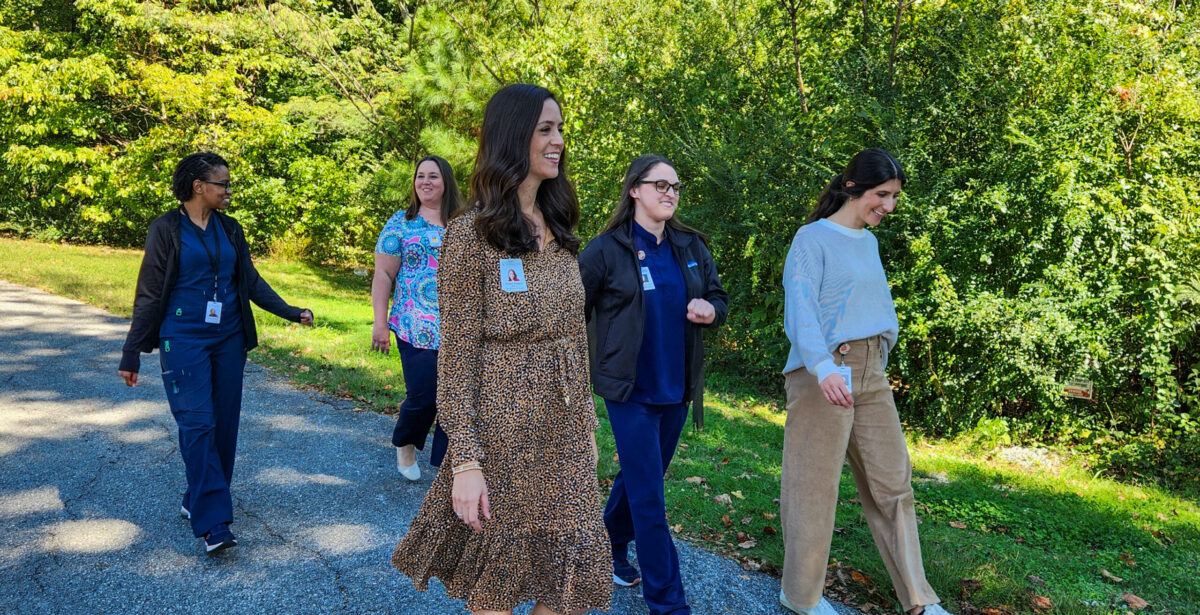February is Heart Month. How the heart works & resources if your child has a heart condition
Reading time: 5 minutes
Partnered Content

February is Heart Month—the time of year where we see cute drawings of hearts in honor of Valentine’s Day and heart health. But do you know how a heart actually works? Maria McAtee, educator on the cardiovascular unit at Children’s of Alabama, talked through it in layman’s terms for us.

Maria also shared resources for parents whose children have been diagnosed with a heart condition. Read on for more heart information!
So, how does a heart work?

We all know our heart is what pumps blood to the rest of our body. But how does this small organ—which is only about the size of your fist—get this vital fluid to the rest of our bodies?
“Much like your house, your heart is dependent on two things that are very important: plumbing and electricity. If the electricity or plumbing is out at your house, you need an intervention. The heart is the same way.”
Maria McAtee, Children’s of Alabama
Your heart needs to be able to operate without clogs (the plumbing side) and with vital electricity—more on that in a minute.
“Fetal heart development is the result of a series of precise twists and turns. Young heart cells develop in this unique pattern that gives rise to the 4 chambers and two major vessels of our heart. If there is a variation or alteration in this unique pattern, a heart defect will result. Some defects in the fetal heart prevent blood flow from reaching a certain chamber or vessel. If there is a defect in the fetal heart preventing blood flow from reaching a certain area, that area is not going to grow. These critical congenital heart defects are treated every day at Children’s of Alabama.”
Maria McAtee, Children’s of Alabama
The Four Chambers & the Journey of Your Blood

Your heart is comprised of four chambers—two on the top (atria), and two on the bottom (ventricles). The right-sided atria and ventricle receive deoxygenated blood from your body—the leftovers after the blood has made its way through the body and given away that oxygen to your tissue.
The main pacemaker (source of electricity) that initiates each heartbeat is found in our right atrium. It sends electrical impulses to the bottom chambers and keeps our hearts beating.
To start the process, blood is ejected from the right ventricle through the pulmonary artery to the lungs, where it gets more oxygen. The lungs send this oxygenated blood back to the left atrium. The left ventricle then pumps this oxygen-rich blood to the rest of the body.
“The left side is the powerhouse. It pumps against a high pressure system. The right ventricle does not have to work as hard to get blood to the lungs because the lungs are a lower pressure system. The left side has to work harder to get blood to the rest of the body. By design, the left ventricle is equipped to handle the higher pressure, where the right ventricle can only handle a smaller load.”
Maria McAtee, Children’s of Alabama
The Number One Birth Defect

Did you know heart defects are number one birth defect? And a diagnosis can understandably be scary for parents.
There’s a wide range of congenital heart defects. Some people are born with less severe heart defects they may be totally unaware of until later in life. Others are born with a subset of critical congenital heart defects.
“If the heart defect is critical and identified before or just after delivery, babies are admitted to Children’s within 24 to 48 hours of life.”
Maria McAtee, Children’s of Alabama
Treatment can vary from one surgery to multiple surgeries to a full-on heart transplant.
For more information about congenital heart defects, visit this website.
Resources for Parents

Children’s of Alabama has several resources for parents of children with heart conditions, including:
- An outpatient cardiology clinic that provides medical expertise in the diagnosis and management of infants, children, adolescents and adults born with congenital heart disease or who acquire cardiac disease during childhood.
- In-patient services like transplant, cardiac imaging and more.
- Camp Wired Together, a camp that helps children learn how to live with implantable cardioverter-defibrillators and life-threatening cardiac disease.
More Information
For more information about Children’s of Alabama’s pediatric cardiovascular services, visit their website.
Partner


 10990 views
10990 views
